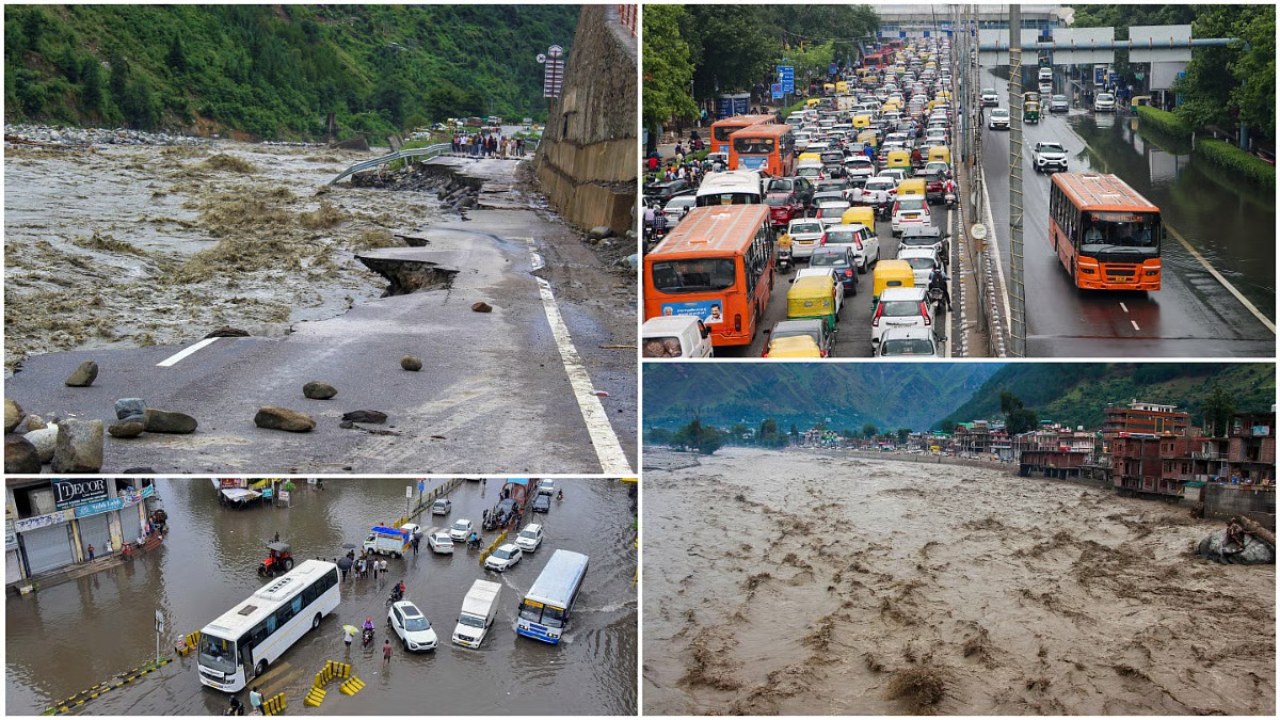North India Monsoon Fury: Monsoon rains in North India are having a profound impact on life and livelihood at this time. On Saturday, light but continuous rains continued from morning to night in Delhi-NCR and surrounding areas. While this rain made the weather pleasant, traffic came to a standstill due to waterlogging in many areas. The Indian Meteorological Department (IMD) has issued a fresh alert saying that the next 24 hours will be challenging for Jammu and Kashmir, Himachal Pradesh, Uttarakhand, Delhi-NCR, Haryana, Punjab, Rajasthan, Uttar Pradesh, and Bihar, as there is a possibility of light to heavy rains in some areas.
Rivers rise due to rain in the mountains
The effect of heavy rains from the hilly states in Uttar Pradesh is clearly visible. The water level of the Ganga, Yamuna, and other rivers is rising rapidly. Rivers have touched the danger mark in districts like Chandauli, Mau, Farrukhabad, Kannauj, and Hapur. The administration has already issued a warning to those living in low-lying areas.
Police and relief teams are active in the villages located near reservoirs and barrages. With the help of boats, many families are being taken to safer places. Due to water entering the streets of the village, people are imprisoned in their homes and it has become difficult to meet their daily needs.
The waters of the Ganga and the Budhi Gandak entered the villages in Bihar
The situation in Bihar is no less worrying. The waters of the Ganga and Budhi Gandak rivers have flooded many residential areas. In Khagaria district, the Ganga river is flowing 2 meters 4 centimeters above the danger mark, while the Budhi Gandak river is 1 meter 73 centimeters above the NH-31 bridge (Aghori Sthan).
17 panchayats of the district have been completely affected by the floods. Fields are submerged, crops are getting destroyed and providing fodder to the cattle has also become a challenge. Villagers say that this time the flow of water is fast and the risk of cutting the banks has increased.
Yamuna is close to the danger mark in Delhi
The situation is becoming serious in Delhi too. The water released from Hathinikund Barrage has suddenly increased the water level of the Yamuna River. By afternoon, the water reached close to the danger mark.
The officials have advised the people living in low-lying areas to move to safer places. Announcements are being made continuously from loudspeakers –
“The water level of the Yamuna is rising rapidly. Please move to safer places with your children and family.”
The coldest day of August in 14 years
The rain has completely changed the weather in Delhi. On Saturday, the maximum temperature in the capital was recorded at 26.4 ° C, which is 7.8 ° C below normal. This proved to be the coldest day of August in the last 14 years. Earlier in 2012, the maximum temperature was 27.9 ° C. Weather experts believe that this period of cold may last for the next few days, as continuous rain and clouds are blocking the heat of the sun.
Weather department’s warning and future prospects
According to the IMD, the weather may remain bad in many parts of North India for the next 48 hours. There is a danger of landslides in hilly areas, while the flood situation may worsen in the plains. Experts have warned that water being released from reservoirs will increase waterlogging in low-lying areas.
Rain has changed the pace of life
From Delhi to Bihar, people are facing the wrath of nature at this time. Somewhere, people are leaving home with the help of boats, while somewhere, children are being deprived of going to school in the rain. Crowds have reduced in the markets, and the transport system is in disarray.
While the rain has brought relief to farmers in some crops, the floods have ruined their hard work by submerging the fields. Everyone’s eyes are on how the weather will be in the coming days.
